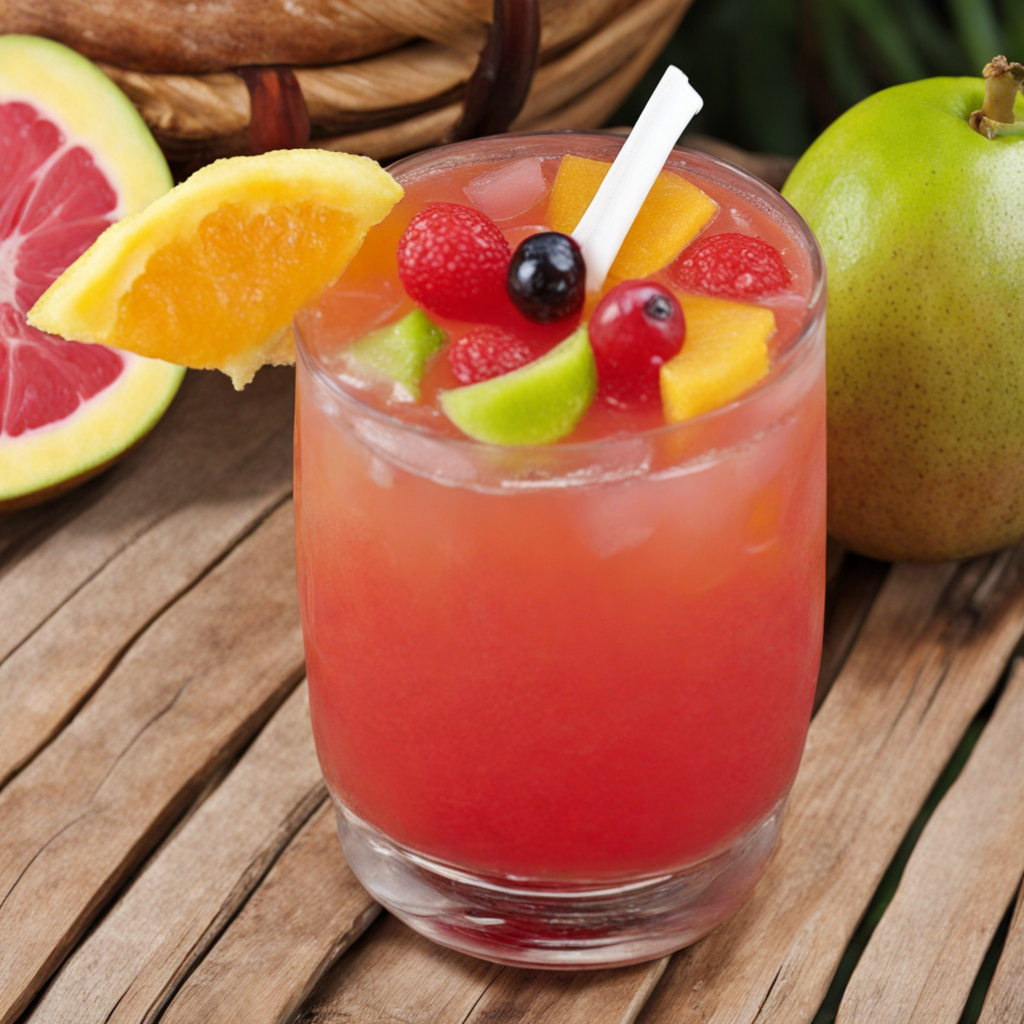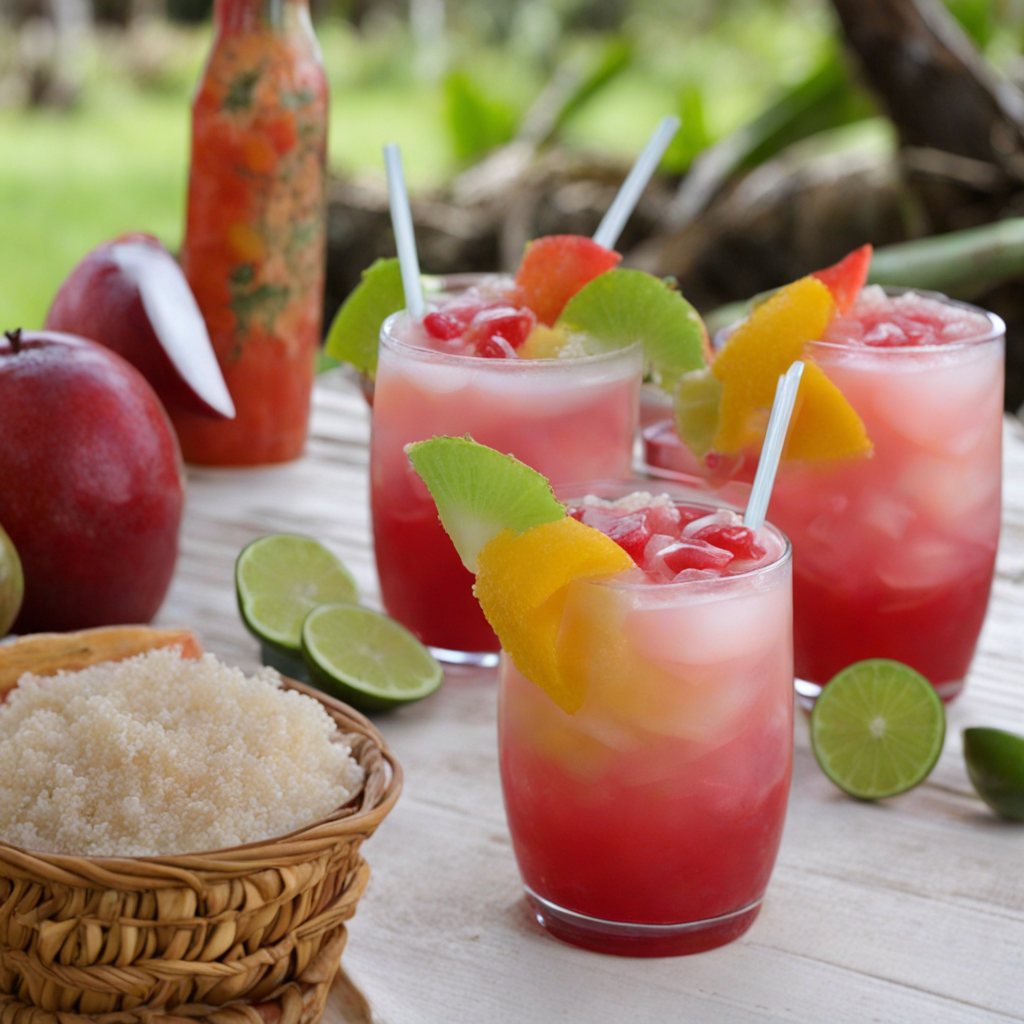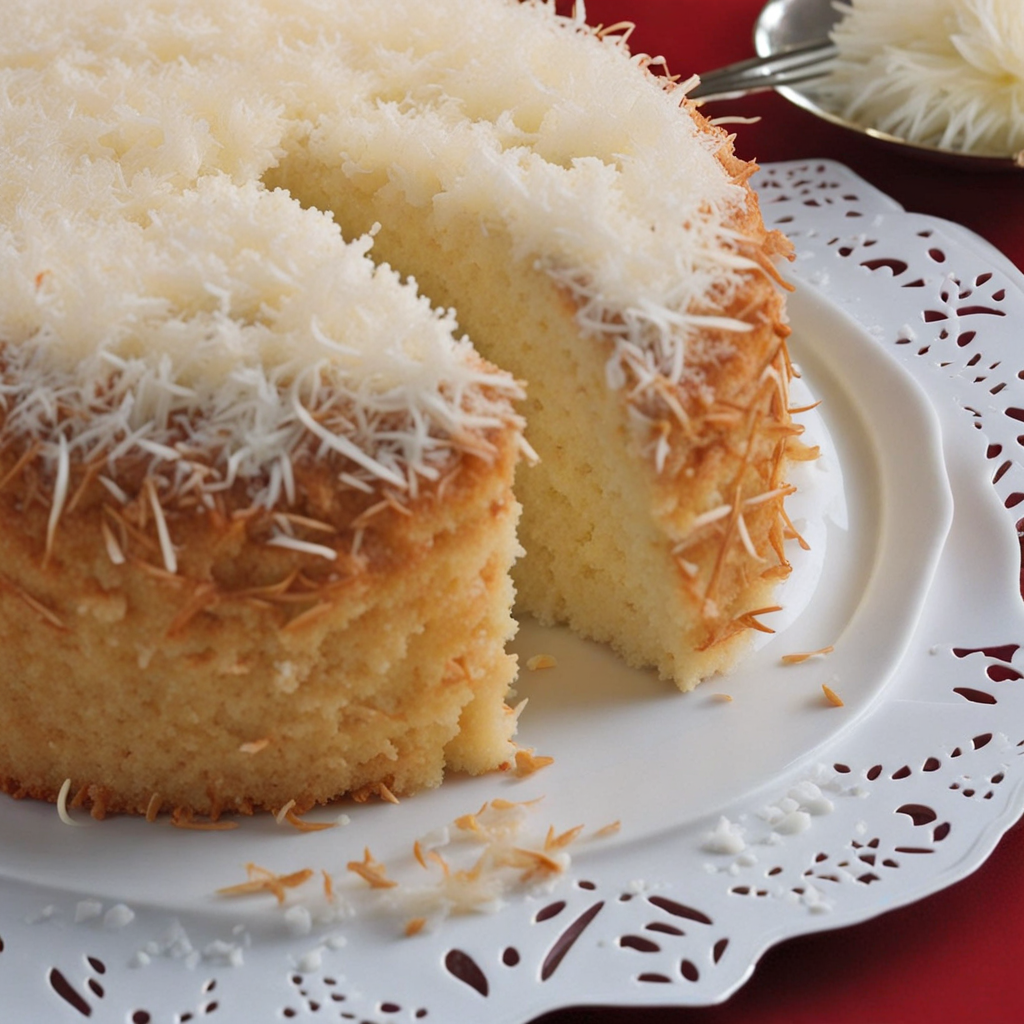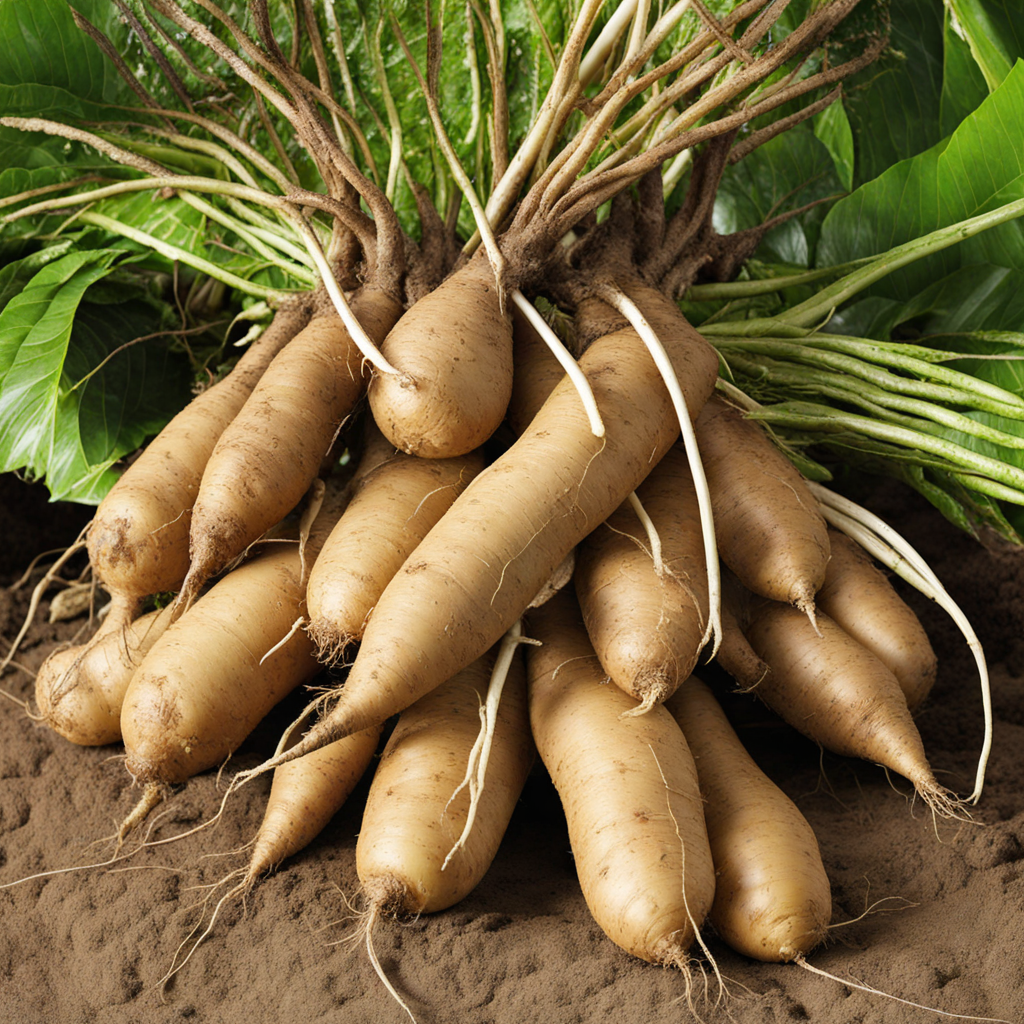Vai Siaine
Vai Siaine is a traditional Tongan dish that beautifully showcases the rich flavors and vibrant ingredients of the South Pacific. At its core, this dish features fresh seafood, typically octopus or fish, marinated in a zesty blend of citrus juices, often from local limes or lemons. The marinade not only enhances the natural sweetness of the seafood but also adds a tangy brightness that invigorates the palate. The use of coconut cream is essential in this dish, providing a creamy texture that complements the seafood and adds a rich, tropical flavor that is synonymous with Tongan cuisine. In addition to the seafood and coconut cream, Vai Siaine is often adorned with a medley of fresh vegetables, including tomatoes, cucumbers, and onions. These ingredients not only contribute a crunchy contrast to the smoothness of the coconut but also bring vibrant colors to the dish, making it visually appealing. The combination of fresh herbs, such as cilantro or mint, can also be found, imparting a refreshing aroma and an extra layer of flavor that enhances the overall experience. This dish is typically served chilled, making it a perfect choice for warm tropical days. The harmonious blend of flavors, from the savory seafood to the creamy coconut and the crisp vegetables, creates a symphony of tastes that transport you to the shores of Tonga with every bite. Whether enjoyed as an appetizer or a light main course, Vai Siaine is a delightful exploration of Tongan culinary traditions, inviting food lovers to discover the unique essence of this beautiful island nation.
How It Became This Dish
The History of Vai Siaine: A Culinary Journey Through Tonga #### Origins and Ingredients Vai Siaine, a traditional Tongan dish, is a flavorful and nourishing pudding made primarily from taro, coconut milk, and sugar. The name "Vai Siaine" translates to "water of Siaine," referring to the taro's significant place in Tongan agriculture and culinary practices. The origins of this dish can be traced back to the rich agricultural heritage of the islands, where taro has been cultivated for over two thousand years. The Tongan people view taro not just as a staple food, but as a cultural symbol representing their connection to the land and their ancestors. Taro is a tuber that thrives in Tongan soil, benefiting from the island’s tropical climate and rich volcanic earth. It is often grown in taro patches, or "maho," where families cultivate a variety of taro known as "kape" or "fakakau." The preparation of Vai Siaine incorporates the natural sweetness of the taro, which is often steamed or boiled, then combined with rich coconut cream, extracted from freshly grated coconuts. This blend of flavors creates a creamy, slightly sweet pudding that is both satisfying and wholesome. #### Cultural Significance Vai Siaine is more than just a dish; it holds deep cultural significance in Tongan society. It is often served during important cultural ceremonies and celebrations, such as weddings, birthdays, and feasts. The preparation and sharing of Vai Siaine during these events symbolizes hospitality, community, and the importance of family ties. In Tongan culture, food is a crucial element in social gatherings, and dishes like Vai Siaine help to foster connections among people. Moreover, the dish reflects the Tongan ethos of "fa’a Tonga," or the Tongan way, which emphasizes the importance of tradition, respect for the land, and the value of communal life. The communal preparation of Vai Siaine, where families gather to grate coconuts or prepare taro, reinforces bonds among generations. Elders pass down their culinary knowledge to the younger generation, ensuring that the art of making Vai Siaine continues to thrive. #### Preparation and Variations The preparation of Vai Siaine is a labor of love that can vary from family to family, each adding their own unique touches based on regional ingredients or personal preferences. Typically, the process begins with selecting mature taro roots, which are peeled and cut into chunks. These chunks are then boiled until soft. Once cooked, the taro is mashed to form a smooth, thick paste. Coconut cream plays a pivotal role in achieving the desired richness of the pudding. Freshly grated coconut is mixed with water to extract the cream, which is then added to the mashed taro. Sugar is incorporated to enhance the sweetness, and the mixture is stirred until well combined. The pudding is then poured into a baking dish and baked until it sets, resulting in a delectable treat with a creamy texture and rich flavor. While the traditional Vai Siaine recipe remains beloved, modern variations have emerged. Some families may choose to add vanilla or other flavorings, while others may incorporate fruits such as bananas or mangoes to create a fusion of flavors. These adaptations reflect the dynamic nature of Tongan cuisine, where traditional dishes are continually evolving to accommodate changing tastes and preferences. #### Historical Development The history of Vai Siaine is intertwined with the broader narrative of Tongan food culture and the socio-economic changes that have influenced it over time. Before European contact in the 18th century, Tongan society relied heavily on subsistence farming, fishing, and gathering. Taro was a fundamental part of the diet, providing essential nutrients and energy for the Tongan people. The cultivation of taro also played a crucial role in social and political structures, as land ownership and agricultural production were closely linked to status and power. The arrival of European traders and missionaries in the 19th century introduced new ingredients and cooking techniques to Tonga. The introduction of sugarcane and other crops provided additional sources of sweetness, enhancing traditional dishes like Vai Siaine. At the same time, the influence of Western culinary practices began to permeate Tongan kitchens, leading to a gradual evolution of traditional recipes. The 20th century brought significant changes to Tongan society, as modernization and globalization began to reshape food practices. Increased access to imported goods and processed foods altered dietary habits, and traditional dishes faced challenges as convenience foods gained popularity. However, Vai Siaine remained a cherished dish, often returning to prominence during cultural festivals and family gatherings, allowing it to withstand the test of time. #### Contemporary Relevance In contemporary Tonga, Vai Siaine continues to hold its place as a beloved dish that encapsulates the essence of Tongan culture. Its preparation is often featured in culinary events and food festivals, where chefs and home cooks alike showcase their skills and creativity. The dish serves as a reminder of the importance of preserving culinary traditions in a rapidly changing world. Furthermore, Vai Siaine has found its way into the hearts and kitchens of Tongans living abroad, serving as a connection to their homeland and a means of sharing their culture with others. It has become a symbol of Tongan identity, allowing diaspora communities to maintain a link to their roots through food. In recent years, the global interest in indigenous and traditional foods has sparked renewed appreciation for dishes like Vai Siaine. Food bloggers, chefs, and cultural advocates have highlighted the importance of preserving traditional recipes, promoting the idea that food is a powerful vessel for cultural expression and identity. #### Conclusion The history of Vai Siaine is a testament to the resilience and adaptability of Tongan food culture. From its origins as a staple in Tongan agriculture to its status as a cherished dish in family gatherings and cultural celebrations, Vai Siaine embodies the spirit of Tonga. It tells the story of a people deeply connected to their land, their traditions, and each other. As Tonga navigates the complexities of modernity, dishes like Vai Siaine serve as a bridge between the past and the present, ensuring that the culinary heritage of the islands continues to thrive for generations to come.
You may like
Discover local flavors from Tonga







